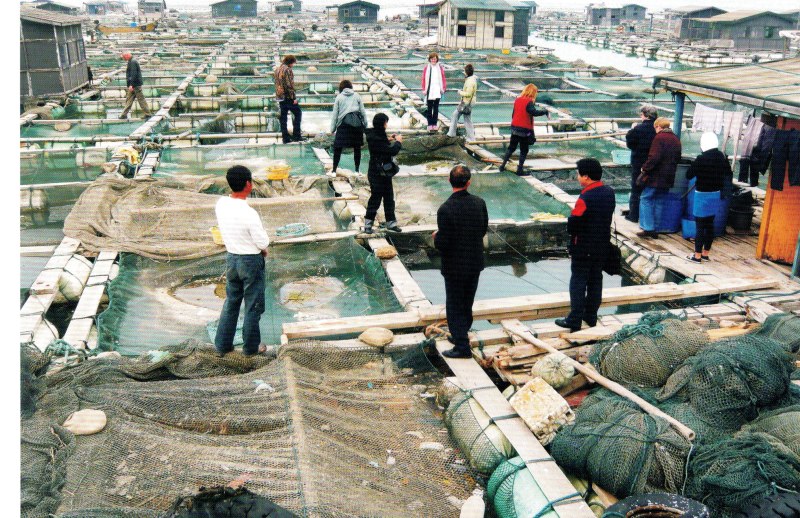Opening
May 9 at 5 PM, 2008
Duration
May 9 till 31, 2008
Location
CEAC, Xiamen, China
 What do we expect of art? According to the romantic point of view an artist removes the veil of the commonplace from our everyday world. In giving artist expression to original perceptions the artist offers an image that discloses the world in an eternal light. Such works of art stand out over and against the artefacts and utensils that adorn our dreary homes.
What do we expect of art? According to the romantic point of view an artist removes the veil of the commonplace from our everyday world. In giving artist expression to original perceptions the artist offers an image that discloses the world in an eternal light. Such works of art stand out over and against the artefacts and utensils that adorn our dreary homes.
The Dutch artists-duo Vroegop/Schoonveld (Matty Vroegop & Ed Schoonveld )- currently having an exhibition in the CEAC at Xiamen – do not operate in that way. Far from decrying the commonplace they pay due attention to it and unveil it as the amazing world it is, offering a fresh view on the mass-produced things with which we surround ourselves.
In the last century mass production was mostly seen as the opposite of works of art. The mass production and mass copying of artworks did challenge the common ideal of the artist. Perhaps we should no longer look at the artist as the exalted genius who produces unique pieces of art. Rather the contemporary artist, exposed to the surrounding technological culture, may position him or herself as a researcher who investigates the prevailing conditions of perception and image production in everyday life.
New technologies, like medical scanning devices, GPS, or telecommunication, change our perceptions and behaviour. They mediate our senses and disclose the world in unprecedented ways. Instead of using these technologies in an instrumental way for unique self-expression, artists can define their work as Artistic Industrial Research. In that case they do not focus exclusively on self expression but immerse themselves in production processes. These become the working material and subject of artistic reflection.
The exhibition of Vroegop/Schoonveld is a proof of this approach of Artistic Industrial Research. They did not bring preconceived artistic concepts to China in order to realize them making use of China’s cheap mass production, but they rather delved into in the conditions and ramifications of mass production in China on its own terms. Their exhibition emerged in the process of making themselves familiar with Chinese operations.
China has a very long history of modular mass production. It started already with the casting of Shang bronzes but pertains as well to porcelain production, lacquer ware and even the building of palaces, temples and houses. Modular mass production requires the breaking up of a total process into composite parts and functions which have to be aggregated again and adjusted under local conditions of use. Mass production presupposes an adequate dealing with the tension between a multitude of things and an ordering grid or an overarching taxonomy of operation procedures. The exhibition of Vroegop/Schoonveld focuses exactly on this creative tension in Chinese production methods.
Mass produced commodities find their way into our everyday life via wholesale and retail. The mainstream of goods branches out into many finer arteries and ends in the capillary vessels of the family businesses bordering on China ‘s crowded city streets. There we see the familiar small scale stores with goods put in the forefront towards the street while the family lives right behind it, grouped cosily around the TV-set, eating noodles while the small child sleeps on top of the crates and packages stacked along the back wall. Vroegop/Schoonveld did not only use this Chinese model in their installation at the CEAC but the model is itself what they want to put on display. The exhibition shows the very tension between the ordering principles (ranging from industries to everyday life) on the one hand and the chaos of a multitude of things, commodities and devices on the other.
Moreover the model exhibited betrays another, more profound tension as well: the tension between the Chinese way of displaying the commodities of everyday life and the artist exhibition thereof within the ‘white cube’ of the Art Gallery . The Art Gallery defines a ritual space in which unique works of art are dramatized. By installing a model of a Chinese shop/wholesale display within the Gallery, two principles of defining art are confronted. Every display of culture betrays a specific culture of display. The Chinese model of display challenges the western exhibition of art, but the model is paradoxically exhibited according to the laws of modern art. The CEAC comes to its right as the arena in which multicultural options clash and fertilize each other. A new type of artist is promoted in this exciting cross-cultural event.
Petran Kockelkoren, prof. Art & Technology of the University of Twente in the Netherlands , cofounder with Vroegop/Schoonveld of AIR&CO (Artistic Industrial Research).

















